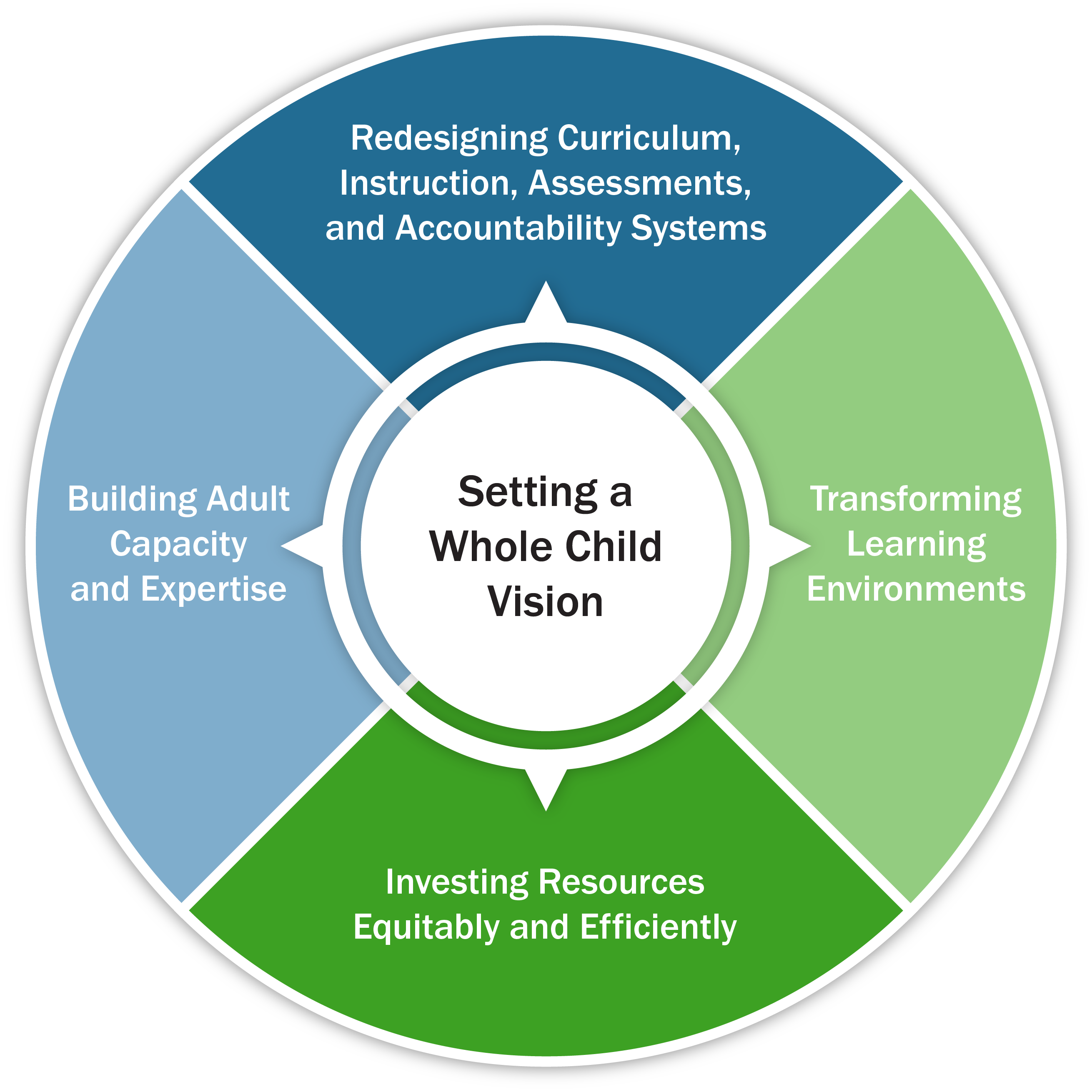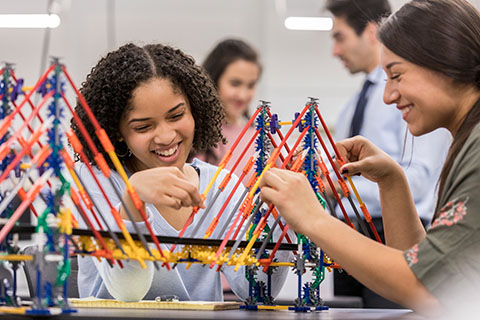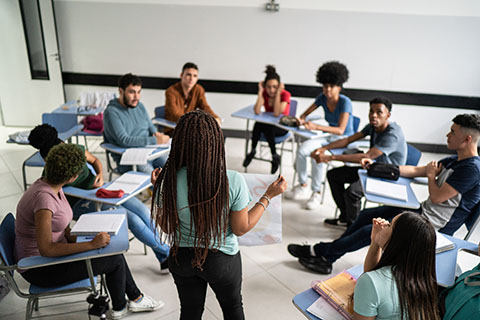Whole Child Policy Toolkit
This toolkit is designed to give state policymakers and education leaders a set of strategies, tools, and resources to advance whole child policy and systems change. A whole child education prioritizes the full scope of a child’s developmental needs—social, emotional, cognitive, physical, and psychological, as well as academic—to ensure that all children are able to reach their full potential. A whole child approach is built on the understanding that students’ education and life outcomes depend on their access to positive relationships inside and outside of school, a safe learning environment, and deeper learning opportunities.
The whole child approach builds on decades of research from the science of learning and development that defines the environments and experiences that children need to thrive. It also draws on the policy agenda set by the National Commission on Social, Emotional, and Academic Development, which brought together leaders from education, policy, research, business, and the military to make recommendations on how to ensure that students’ social, emotional, and cognitive development is centered in schools.
Shifting toward a whole child education has far-reaching implications for our education system, requiring greater collaboration to promote children’s learning, well-being, and healthy development. The Whole Child Policy Toolkit outlines how policymakers can support schools, districts, and communities to make these shifts and to meet the needs of every child efficiently, effectively, and most importantly, equitably. It provides the evidence base for high-quality whole child practices; policy strategies and actions that states can take; examples of state-level policies and initiatives; and a library of resources to help state policymakers advance policy and systems change.
The Whole Child Policy Toolkit was produced by the Learning Policy Institute with input from more than a dozen Whole Child Policy Table partners and several individual organizations and experts. This toolkit is organized into five key elements, shown in the figure and described below.

A whole child vision is an important first step in articulating both the knowledge, skills, and dispositions students need to be successful and the ways state and local leaders can provide the resources to ensure students are able to succeed. A shared whole child vision, created by a diverse, representative set of stakeholders, is essential for communicating the need for a systemic, collaborative approach across youth-serving agencies to meeting the needs of every child. To set a whole child vision, states can:
- Convene a diverse set of stakeholders to develop a statewide whole child vision
- Assess conditions of learning and development for children and youth
- Establish coordinating bodies to advance the whole child vision through children and youth cabinets and strategic task forces to identify current state capacity and needs and provide guidance to support service provision
For healthy learning and development to take place, students must feel safe and supported. This is more likely to happen when learning environments are structured in ways that foster strong relationships, build trust, and allow children to feel valued. To support young people and their varied needs, learning environments should also be designed to include protective factors such as health, mental health, and social service supports, as well as opportunities to extend learning and build on interests and passions. To transform learning environments, states can:
- Support relationship-centered learning environments that are designed to facilitate strong relationships and trust among students, staff, and families/caregivers
- Foster culturally responsive and inclusive learning environments filled with safety and belonging, in which all students feel valued and positive relationships can flourish
- Adopt restorative and educative approaches to school discipline that replace exclusionary practices with trauma-informed and healing-oriented approaches
- Adopt integrated support systems that use an asset-based approach to address social, emotional, academic, and physical and mental health needs; develop partnerships; and provide individualized supports that remove obstacles to learning and meet the holistic needs of students and families/caregivers
- Provide high-quality expanded learning time that mitigates opportunity gaps, builds upon students’ strengths, and nurtures positive relationships
The U.S. education system was built on a factory model of education designed during the Industrial Revolution, in which teachers deliver instruction to passive students, content areas are siloed, and learning is primarily defined by multiple-choice test scores. This model stands in stark contrast to the growing knowledge base of how people learn: through authentic learning experiences that actively engage students, help students develop higher-order thinking skills, ask students to apply what they have learned, and treat all students as equally capable of success. To redesign curriculum, instruction, assessment, and accountability systems that meet the needs of today’s students, states can support and develop:
- Rich learning experiences that support the development of deeper learning skills, such as critical thinking and problem-solving skills and social-emotional competencies; draw on culturally and linguistically responsive approaches; and include personalized learning structures
- Authentic systems of assessments that are culturally and linguistically responsive, provide students with opportunities to demonstrate their learning and development in a variety of ways, and are designed to measure growth and progress
- Comprehensive accountability systems designed for continuous improvement that measure students’ opportunities to learn and support a system designed to improve whole child outcomes
- Distance and blended learning models that are equity focused, offer personalized instruction, and take advantage of the different settings in which learning can take place
Research from the science of learning and development points to important transformations in teaching practice needed to ensure that children experience the secure relationships, skillful teaching, and personalized supports that will enable healthy development and successful lives, including for those who have experienced adverse conditions. To build adult capacity and expertise to support the whole child, states can establish and support:
- Educator preparation systems that prepare teachers and school leaders with the knowledge, skills, and dispositions needed to support whole child developmental needs and support students’ development of 21st-century skills
- Proactive teacher recruitment and retention strategies through high-retention pathways, including high-quality teacher residencies and Grow Your Own programs, service scholarships and loan forgiveness programs, strong hiring practices, and competitive compensation
- High-quality mentoring and induction programs that integrate whole child approaches and ensure that novice educators receive the comprehensive supports needed to remain in the profession and succeed
- Professional development and educator evaluation and improvement systems that support student and educator development and growth and encourage teacher collaboration and reflection
- Strategies to improve the social, emotional, and mental health and well-being of educators and other school staff through the creation of positive learning environments
To provide all students with equitable access to safe and supportive learning environments, states must ensure that resources, including money, time, staff, and staff training, are distributed efficiently and equitably. States should ensure that all students have access to adequate physical facilities, a welcoming and inclusive school environment, high-quality learning opportunities, and well-prepared teachers and school leaders. State leaders also need to reduce fragmentation and improve alignment across programs and funding streams and align school-based and community-based resources to support students’ full range of needs. To align resources efficiently and equitably, states can:
- Adopt adequate and equitable school funding formulas that prioritize high-need schools and support all young people in having access to the whole child opportunities they need to succeed
- Allocate new funding across the developmental continuum to ensure children and families are supported from birth to age 5
- Blend and braid federal, state, and local resources to reduce fragmentation and improve alignment across funding streams and programs
- Leverage and align federal funds in ways that support all young people in having access to the whole child opportunities they need to succeed
- Invest new funding in community schools and integrated student supports to better serve the holistic needs of children and families
- Close the digital divide to ensure every child has access to appropriate technology and connectivity to meet their whole child needs



